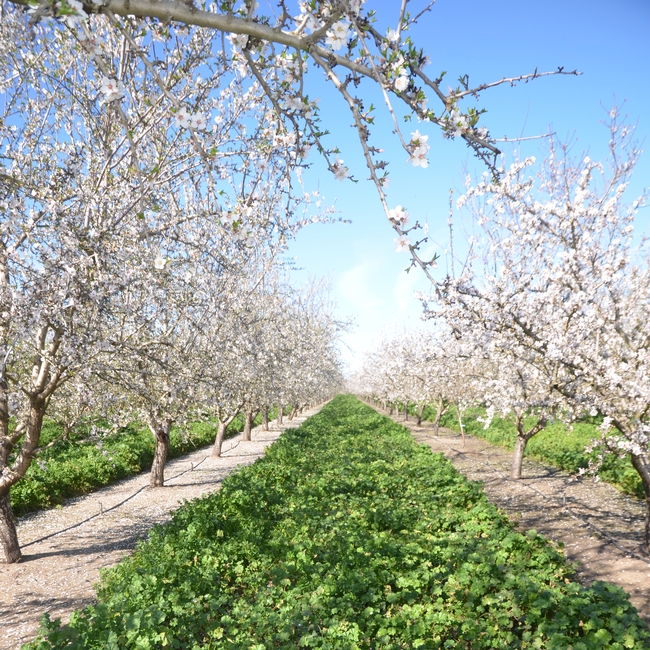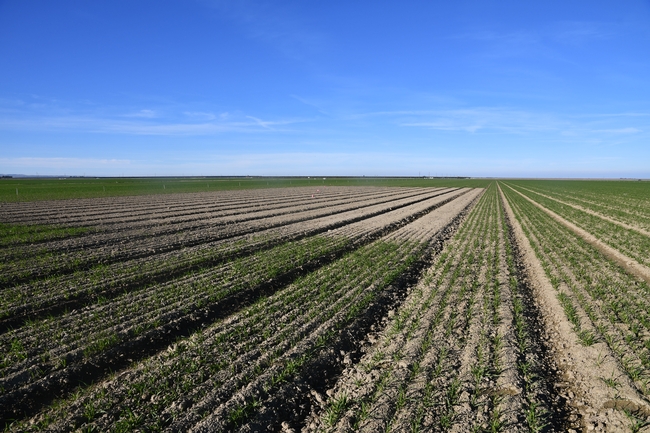New cover crop research can help groundwater sustainability agencies plan
Cover crops seem to offset their water use by improving soil moisture retention
Cover crop research conducted by a team of university researchers is now helping to inform and shape policy to implement the Sustainable Groundwater Management Act (SGMA) in several San Joaquin Valley counties.
“The Madera County Regional Water Management Group appreciates continued scientific discussions on SGMA-related issues, and especially enjoyed hearing from researchers on cover crops,” said Tom Wheeler, chair of the Regional Water Management Group for Madera County and a Madera County supervisor. “This is work that should be helpful to growers as they evaluate cover crops as part of their sustainable future.”
To help protect groundwater resources over the long-term, groundwater sustainability agencies (GSAs) are developing groundwater sustainability plans for their local regions.
"Our findings suggest that cover crop water use is negligible in most water years and the long-term benefits can help GSAs meet their management goals,” said Alyssa DeVincentis, a former UC Davis Ph.D. student who worked on the project. “How cover crops impact soil moisture depends on species and management history, but generally soil moisture at the end of the winter season did not differ between fields with winter cover crops and clean cultivated soils."
From 2016 through 2019, UC Agriculture and Natural Resources researchers and their collaborators amassed very large data sets from almond orchard and tomato field sites located between Chico in Butte County and Arvin in Kern County. They used the data to quantify changes in soil water storage and evapotranspiration that occur under cover-cropped and bare fallow conditions during the winter cover crop growing period – about November to March.
The research team includes UC Cooperative Extension water specialists Daniele Zaccaria, Samuel Sandoval-Solis and Jeff Mitchell based at UC Davis; DeVincentis now of Vitidore, Inc.; and Anna Gomes, Ph.D. student at Stanford University.
The GSAs must first quantify the amount of water going into the groundwater bank through rainfall and surface water irrigation versus the amount of groundwater being removed at all farms within the GSA's jurisdiction.
“To do this, many local GSAs are turning to remote sensing and modeling of evapotranspiration, or ET, to provide data on the regional balance between groundwater depletions versus recharges,” Mitchell explained.
“Because winter cover crops may appear on remote sensing images as water-using vegetation, the sole use of model-driven data coming from satellites could become a disincentive to the practice being used.”
“This approach may not account for the important benefits that winter cover crops provide San Joaquin Valley farmers like Justin Wylie, a Madera County almond and pistachio grower who works with the research team,” Mitchell said. “He has experienced the benefits of winter cover crops firsthand, including increased water infiltration, habitat and carbon for soil organisms, and reduced water run-off.”
Cover crops grown during the winter may not use a lot of soil water because ET during this period tends to be low. They also provide shading and soil surface cooling, which help reduce soil evaporation. In addition, Mitchell said that cover crops can improve soil aggregation, pore space and soil moisture retention.
Together, cover crop benefits seem to offset or compensate for their actual water use during the winter.
“Because GSAs need reliable and accurate information related to this important issue and to possible shortcomings of relying solely on remote sensing as the way to go, our research has been particularly timely in the context of SGMA,” said Daniele Zaccaria, associate professor and water management specialist in UC Cooperative Extension at UC Davis.
A presentation about their cover crops research is available on YouTube at https://youtu.be/x3xQlZ9EdCk. The webinar is intended for water agency personnel, but the information is relevant to anyone who is interested in how cover crops may influence San Joaquin Valley cropping systems and the water cycle, Mitchell said.
A peer-reviewed article about this cover crop research, “ “Impacts of winter cover cropping on soil moisture and evapotranspiration in California's specialty crop fields may be minimal during winter months,” will appear in the first quarterly issue of California Agriculture in 2022.




Thanks, Sai
Posted by Sai Nuthakki on January 18, 2022 at 12:34 PM